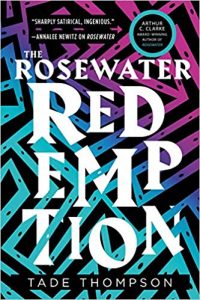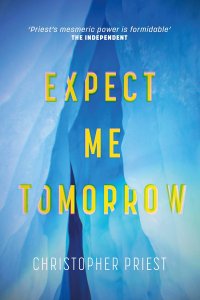Rachel Swirsky Reviews Mandelbrot the Magnificent by Liz Ziemska
 Mandelbrot the Magnificent, Liz Ziemska (Tor.com Publishing 9780765398055, $10.99, 128pp, November 2017, trade paperback). Cover artist Will Staehle.
Mandelbrot the Magnificent, Liz Ziemska (Tor.com Publishing 9780765398055, $10.99, 128pp, November 2017, trade paperback). Cover artist Will Staehle.
“I want to make a discovery just like Kepler’s,” Mandelbrot announced, [his] life’s purpose suddenly clear to [him], “a discovery so simple, so obvious, that no one else has thought of it.”
Liz Ziemska’s Mandelbrot the Magnificent is a fantastical, fictionalized biography of Benoit Mandelbrot and his discovery of the Mandelbrot set. The Jewish Mandelbrot narrates, beginning with his childhood in Warsaw, which he and his family were forced to flee to escape Hitler’s invasion.
The bulk of the story takes place in France where Mandelbrot and his family attempt to conceal their heritage, first from French anti-Semites, and then from collaborators and German invaders. During this time, Mandelbrot is preoccupied with his mathematical education.
When a rabbi shows Mandelbrot a Jewish religious symbol, the sefirot, Mandelbrot is able to discover the key within it to a new dimension where he hides his family from the worst German violence. Thus, Mandelbrot achieves what he wanted from the beginning: to make a discovery like Kepler’s.
Mandelbrot the Magnificent begins and ends with a frame story about Mandelbrot as an old man. Although the frame strives to give Mandelbrot historical context, it’s weakly done in comparison to the rest of the book.
One of the pleasures of reading fiction about science or mathematics is the way some authors are able to convey their love of the subject through image and metaphor. When six-year-old Mandelbrot first hears of Kepler, he thinks of a carousel he saw at the Warsaw Zoo:
Round and round we rode to the plinking sounds of the calliope, until my horse broke free from its circular orbit and began galloping along a tangent line, gaining speed as we shot off into the distance, the wind tossing my hair, tossing the horse’s no-longer-wooden mane into my face, and just as we reached the outer perimeter of the park, we were snapped back by the invisible force of that second focal point. Relentlessly, our path curved inward, centrifugal forces tugging at my belly button, as we were pulled back in the direction of the carousel horse.
While I’m not sure most mathematicians have such beautiful, tangible reveries about numbers, the conceit is lovely.
The novella is written with scrupulous detail in a careful style that’s reminiscent of real autobiographies about that time period. Mandelbrot’s personal history makes for a story that takes a different trajectory through war-torn Europe than many American narratives about Jews and WWII. His mother’s dentistry practice, particularly, is the source of several striking moments as she attempts to care for their neighbors and friends despite the risk.
Religion is well-integrated into the story’s fantastical and historical threads. Mandelbrot views mathematics as part of the fabric of God’s universe, an integral manifestation of creation. Without God and Mandelbrot’s religious belief, the story simply wouldn’t work.
Love of mathematics is the central theme that ties the book together. Mandelbrot’s passion for numbers comes through, and so does Ziemska’s.
This review and more like it in the December 2017 issue of Locus.






